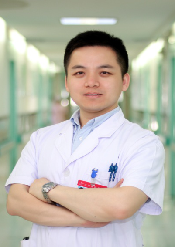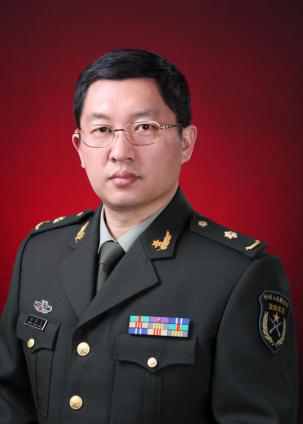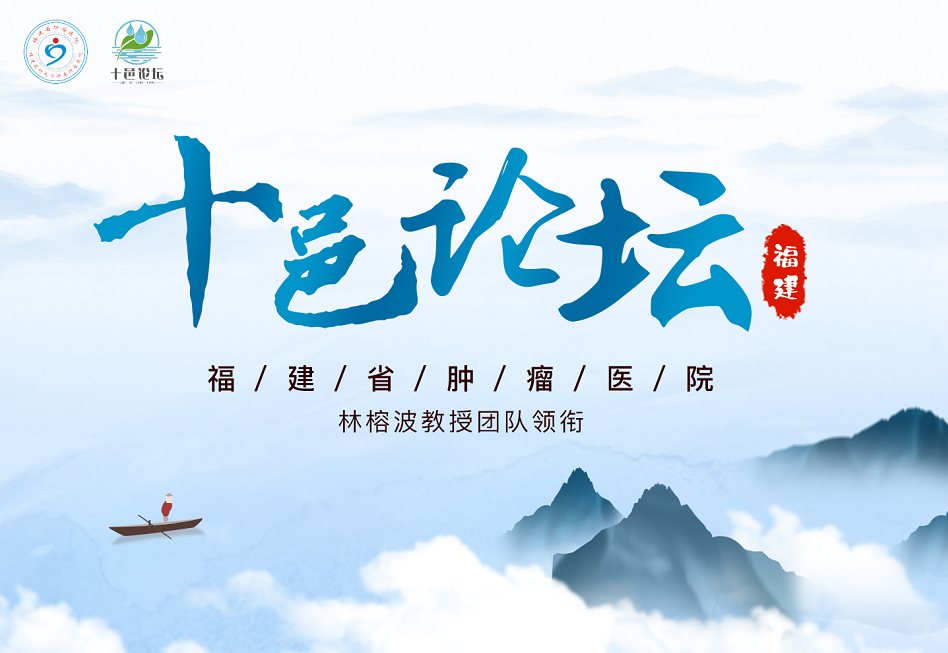翻译:杜成
2018年欧洲肿瘤医学协会会议(ESMO)在德国-慕尼黑盛大举行。ESMO会议作为欧洲肿瘤学专业最具影响力的年度会议,一直致力于推进肿瘤医学专业的发展,以多学科的方法来促进癌症的治疗和护理。本人有幸参与今年的ESMO盛会,在会场进行交流学习的同时,对肿瘤免疫治疗不良反应的临床数据进行了更为深入的学习。现对相关报道进行解读与点评,与广大医务工作者和肿瘤科研工作者分享本次盛会的成果。

第四军医大学肿瘤学博士,沈阳军区总医院全军肿瘤诊治中心肿瘤科主治医师,博士后。从事肿瘤内科工作近10年,致力于胃癌、乳腺癌和泌尿生殖系肿瘤的精准诊疗以及肿瘤营养治疗。第一作者发表SCI论文6篇,核心期刊论文8篇。承担国家自然科学基金青年项目、中国博士后基金特别资助和面上项目、辽宁省博士启动基金、沈阳市人社局博士后基金等多项课题。参编专著5部,申报专利1项。获辽宁省自然科学学术成果一等奖,中国抗癌协会肿瘤营养青年学者辩论赛个人二等奖,中国临床肿瘤学会“抗肿瘤血管靶向治疗全国病例大赛”一等奖,中国抗癌协会肿瘤标志物大会论文一等奖,2017年CSCO 35岁以下青年肿瘤医师评选全国百强。兼任中国抗癌协会中西医整合肿瘤专业委员会青年委员,辽宁省生命科学学会泌尿生殖肿瘤诊治与康复专业委员会委员,辽宁省营养学会肿瘤营养治疗委员会委员兼秘书,辽宁省细胞生物学学会肿瘤精准治疗与大数据管理分会委员,《肿瘤学杂志》青年编委。
一、Nivolumab在日本非小细胞肺癌(NSCLC)患者中的真实世界安全性:上市后全人群监测的中期总结(摘要:1217P)
背景
Nivolumab是一种完全人源化的抗PD-1抗体,于2015年12月在日本被批准用于既往经过治疗的、不可切除、晚期或复发的NSCLC。由于临床试验数据有限,因此上市后进行全人群监测作为该药获批的附加条件,以便积累nivolumab的真实世界安全性数据。
本研究是一项正在进行的对全人群安全性进行观察登记的项目,旨在寻找新的免疫治疗相关的安全问题。所有在2015年12月17日至2016年3月31日期间接受nivolumab治疗的NSCLC患者均接受登记并监测不良反应达一年。根据日本上市后研究实践条例,使用病例报告表(CRF)积累安全性数据。本中期汇总数据基于2018年1月3日以前纳入患者的CRF表。
结果
2015年12月17日至2016年3月31日期间招募了3681名患者,截至2018年1月3日收集了3303例CRF。安全性分析包括3303名患者中的3297名患者。患者背景特征:中位年龄为67岁; 74%的患者现在或既往吸烟; 77%的患者的ECOG体力状态评分为0(24%)或1(53%); 66%和28%的患者分别患有腺癌或鳞状细胞癌。任何等级的药物不良反应发生率为45%。令人关注的常见(5%或更高)不良事件包括间质性肺病(ILD,9.1%;≥3级为3.9%),甲状腺功能障碍(8.7%;≥3级为0.3%),肝功能障碍(7.8%;≥3级为2.0%),输液反应(5.4%;≥3级为3.3%)和结肠炎/重症腹泻(5.3%;≥3级为3.3%)。 1年总生存率为37%(95%CI,35.2至38.6)。后续将报告更新的数据以及ILD的预估风险因素。
结论
在日本既往经治、不可切除的晚期或复发性NSCLC的患者中,除了ILD发生率外,nivolumab在真实世界中应用与临床试验数据显示出几乎一致的安全性。应持续监测患者风险获益情况。
附原文:
Real-world safety of nivolumab in patients with non-small cell lung cancer (NSCLC) in Japan: Interim summary of post-marketing all-case surveillance (Abstract: 1217P)
Background: Nivolumab, a fully humanized anti-PD-1 antibody, was approved in December 2015 in Japan for the treatment of previously-treated, unresectable, advanced or recurrent NSCLC. A post-marketing all-case surveillance was imposed as a condition for approval, to accumulate real-world safety data for nivolumab, because clinical trial data were limited.
Methods: This all-case surveillance is an ongoing mandatory observational register, searching for new treatment-related safety issues. All NSCLC patients treated with nivolumab between 17 December 2015 and 31 March 2016 were registered and monitored for one year. Safety data were accumulated using case report forms (CRFs) in accordance with Good Post-Marketing Study Practice Ministerial Ordinance in Japan. This interim summary is based on data collected and summarized from patients whose CRFs were available by 3 January 2018.
Results: Overall, 3681 patients were enrolled from 17 December 2015 to 31 March 2016, with 3303 CRFs collected by 3 January 2018. The safety analysis set included 3297 of 3303 patients. Background characteristics of patients: median age was 67 years; 74% of patients were current or former smokers; 77% of patients had an ECOG performance status score of 0 (24%) or 1 (53%); 66% and 28% of patients had adenocarcinoma or squamous cell carcinoma, respectively. The frequency of adverse drug reactions of any grade was 45%. The most frequent (5% or higher) adverse events of special interest were interstitial lung disease (ILD, 9.1%; grade ≥ 3, 3.9%), thyroid dysfunction (8.7%; grade≥ 3, 0.3%), hepatic function disorder (7.8%; grade≥ 3, 2.0%), infusion reaction (5.4%; grade≥ 3, 0.3%) and colitis/severe diarrhea (5.3%; grade ≥ 3, 1.3%). The overall survival rate at 1 year was 37% (95% CI, 35.2 to 38.6). We will report updated data along with estimated risk factors for ILD.
Conclusions: Among Japanese patients with previously-treated, unresectable, advanced or recurrent NSCLC, nivolumab showed an almost consistent safety profile with clinical trial data except for frequency of ILD. The benefit-risk profiles should continuously be monitored.
二、70岁以上患者接受抗PD-(L)1治疗的免疫相关不良事件发生率(摘要:1206P)
背景
高龄是癌症的重要危险因素,与预后不良有关。高龄人群免疫系统发生的改变称为免疫衰老。然而,衰老对免疫检查点抑制剂(例如抗PD(L)1)的功效和安全性的影响仍未确定。
方法
回顾性分析2014年6月至2017年10月期间纳入Gustave Roussy免疫检查点抑制剂专用药物登记处的接受抗PD(L)1药物治疗的晚期实体瘤患者。采用卡方检验比较≥70岁和<70岁之间的患者2级或以上免疫相关不良事件(irAE)的发生率。
分析纳入的615名患者中,191名年龄≥70岁(老年患者)和424名<70岁(年轻患者)。 老年患者和年轻患者的中位年龄分别为77(70-93)和59(17-69),共发生165例irAE(103级2级和58级3-4级)。与年轻患者相比,老年患者中irAEs等级≥2的总体发生率更高(33%对25%,p = 0.03)。根据其严重程度对irAE进行分层时,两组间不良反应发生率无统计学差异(2级为p = 0.08,3-4级为p = 0.13)。抗PD(L)1相关死亡老年患者中发生1例,年轻患者发生3例(分别为0.5%和0.7%; NS)。 老年患者中最常见的器官毒性是皮疹(49%)、内分泌(14%)、肝脏(10%);年轻患者则是皮疹(28%)、内分泌(25%)和消化系统毒性(15%)。两组之间的发生毒性的时间相似(老年患者为7周,年轻患者为6周,p = 0.31)。
结论
抗PD(L)1免疫疗法是一种老年患者可接受的治疗选择,但需注意免疫相关的不良事件在这一人群中更为常见。有必要进一步开展前瞻性研究以探索老年患者中免疫治疗相关的安全性。
附原文:
Incidence of immune related adverse events in patients 70 years old treated with anti-PD-(L)1 therapy (Abstract: 1206P)
Background: Advanced age is an important risk factor of cancer and is associated with poor prognosis. Changes in the immune system called immunosenescence may occur with older age. However, the impact of aging on efficacy and safety of immune checkpoint inhibitors (ICI), such as anti-PD(L)1, remains undetermined.
Methods: Patients with advanced solid tumours treated with an anti-PD(L)1 agent monotherapy between June 2014 and October 2017 and prospectively included within the Gustave Roussy ICI-dedicated pharmacovigilance registry REISAMIC (Registre des Effets Inde´sirables Se´ve`res des Anticorps Monoclonaux Immunomodulateurs en Cance´rologie) were retrospectively reviewed. Incidence of immune-related adverse events (irAEs) of grade ≥2 was compared between patients aged ≥70 and< 70 years old using Chi-squared test.
Results: Among the 615 patients included in the analysis, 191 were ≥70 years old (OP) and 424< 70 years old (YP). The median age of OP and YP were respectively 77 (70 -93) and 59 (17 - 69). A total of 165 irAEs were included in the analysis (103 Grade 2 and 58 Grade 3-4). The overall occurrence of irAEs grade ≥ 2 was higher in OP compared to YP (33% versus 25%, p=0.03). Statistical significance was lost when stratifying irAEs according to their severity grade, suggesting that this effect was constant whatever the grade (p=0.08 for Grade 2 and p=0.13 for Grade 3-4). Anti-PD(L)1-related deaths were registered in 1OP and 3 YP (0.5% and 0.7% respectively; NS). The most frequent organs toxicities in OP were skin rash (49%), endocrine (14%), hepatic (10%); it was skin rash (28%), endocrine (25%), digestive (15%) in YP. Median time to toxicity was similar between the two groups (7 weeks in YP and 6 weeks in OP, p=0.31).
Conclusions: Anti-PD(L)1 immunotherapies are an acceptable treatment option for OPs, by being aware that immune related adverse events are more frequent in this population. Further dedicated studies are warranted to explore prospectively immune related safety in OPs.
三、免疫相关不良事件后再次使用抗PD(L)1药物的安全性评估(摘要:1203P)
免疫检查点抑制剂(ICI)已在许多癌症中证明有效。患者可能会出现免疫相关的不良事件(irAE),对这类患者的管理变得至关重要。关于发生irAE后再使用ICI治疗的循证指导仍然很少。本研究旨在前瞻性研究irAE后再次应用PD(L)1的安全性。
方法
分析纳入了2015年8月至2017年12月期间在Gustave Roussy肿瘤医院接受抗PD(L)1治疗,并经免疫毒性多学科委员会(iTOX)确定发生了≥2级的irAE的患者后。
结果
118名患者确诊为irAE。中位数年龄为62岁。肿瘤类型为黑色素瘤(25.4%,n = 30),肺癌(22.9%,n = 27),结直肠癌(8.5%,n = 10),淋巴瘤(7.6%,n = 9),肾细胞癌(7.6%,n = 9),尿路上皮(6.8%,n = 8)和其他(21.2%,n = 25)。 IrAE在不同等级分布如下:2级(n = 56,47.5%),3级(n = 44,37.3%)和4级(n = 18,15.2%)。 IrAE包括:肝炎(15.2%,n = 18),皮肤毒性(14.4%,n = 17),肺炎(13.6%,n = 16),结肠炎(10.2%,n = 12),关节痛(8.4%,n = 10),血液学(7.6%,n = 9)肌肉(6.8%,n = 8),神经系统(5.9%,n = 7),眼部(5.1%,n = 6)毒性,脂肪酶增加(4.2%,n = 5),内分泌(4.2%,n = 5),肾脏(2.5%,n = 3),心脏毒性(0.8%,n = 1)和输注相关反应(0.8%,n = 1)。其中40名患者(33.8%)因irAE暂时停药,然后再次接受抗PD(L)1治疗。再次接受抗PD(L)1治疗和未再接受治疗的患者在年龄、分布、毒性等级以及类固醇激素使用方面没有差异。不同等级irAE患者再次接受抗PD(L)1治疗的例数分别为: 2级(n = 18, 45%),3级(n = 17, 42.5%)4级(n = 5, 12.5%)。40例再治疗患者中40%(16/40)没有复发,35%(14/40)复发相同的irAE,15%(6/40)有新的irAE发生,10%(4/40)有多种irAE发生。IrAE后再次抗PD(L)1后没有引发患者死亡。结肠炎的IrAE复发率为3/5,关节痛为3/6,肝炎为3/5,肺炎为1/5,胰腺炎为0/3,中性粒细胞减少为2/3,皮肤毒性为3/7。与3-4级相比,2级复发率没有差异。
结论
轻度或重度irAE后再次应用ICI与60%的患者复发≥2级的irAE或出现新的irAE有关。出现IrAE的患者再次接受抗PD(L)1治疗的毒副反应可耐受,但需密切监测。
附原文:
Safety assessment of anti-PD(L)1 rechallenge after immune-related adverse events (Abstract: 1203P)
Background: Immune checkpoint inhibitors (ICI) have demonstrated efficacy in many cancers. Patients can experience immune-related adverse events (irAE) and their management become crucial. Evidence-based guidance regarding the safety of rechallenge remains scarce. This study aims to prospectively investigate the safety of patients rechallenged after irAE.
Methods: Patients rechallenged after irAE grade ≥2 induced by anti-PD(L)1 and referred at the multidisciplinary board committee of immune toxicity (iTOX) of Gustave Roussy between August 2015 and December 2017 were included in this study.
Results: One hundred eighteen patients had a confirmed irAE. Median age was 62. Tumour types were melanoma (25.4%, n=30), lung carcinoma (22.9%, n=27), colorectal cancer (8.5%, n=10), lymphoma (7.6%, n=9), renal cell carcinoma (7.6%, n=9), urothelial (6.8%, n=8) and others (21.2%, n=25). IrAE distribution was grade 2 (n=56, 47.5%), grade 3 (n=44, 37.3%) and grade 4 (n=18, 15.2%). IrAE toxicities were hepatitis (15.2%, n=18), skin toxicities (14.4%, n=17), pneumonitis (13.6%, n=16), colitis (10.2%, n=12), arthralgia (8.4%, n=10), hematologic (7.6%, n=9) muscular (6.8%, n=8), neurologic (5.9%, n=7), ocular (5.1%, n=6) toxicities, lipase increases (4.2%, n=5), endocrine (4.2%, n=5), nephrologic (2.5%, n=3), cardiac toxicities (0.8%, n=1) and infused related reaction (0.8%, n=1). Forty patiens (33.8%) were hold and then rechallenged. Rechallenged and non-rechallenged patients didn’t differ in term of age, distributions and grades of toxicity and steroids use. Patients were rechallenged after an irAE grade 2 (n=18, 45%), grade 3 (n=17, 42.5%) grade 4 (n=5, 12.5%). 40% (16/40) had no recurrence, 35% (14/40) had recurrence of the same irAE, 15% (6/40) experienced a new irAE, and 10% (4/43) had multiple irAE. No patient had died after rechallenge. IrAE recurrence rates rates were 3/5 for colitis, 3/6 for arthralgia, 3/5 for hepatitis, 1/5 for pneumonitis, 0/3 for pancreatitis, 2/3 for neutropenia, 3/7 for skin toxicities. Recurrence rates were not different in grade 2 compared to grades 3-4.
Conclusions: The rechallenge of ICI after mild or severe irAE was associated with 60% of irAE grade≥2 recurrence or new irAE. Toxicity profile was acceptable but required a close monitoring.
专家点评

沈阳军区总医院肿瘤科主任,中国医科大学、大连医科大学、沈阳药科大学、锦州医科大学硕士研究生导师。从事恶性肿瘤综合治疗的临床及科研工作近20年,擅长乳腺、呼吸系统、消化系统、泌尿生殖系统等部位常见及各种罕见恶性肿瘤的科普宣教、预防、诊断及综合治疗。常年致力于各种实体肿瘤的精准诊疗和临床转化研究,擅长乳腺、呼吸道、胃肠道等恶性肿瘤的预防、诊断及治疗。主持科研立项9项,共计70余万元;获得省部级以上科研奖励10项,发表中文核心期刊近50篇,SCI收录 20篇,总影响因子42.79分;担任辽宁省细胞生物学学会肿瘤精准治疗与大数据管理分会主任委员、辽宁省抗癌协会肿瘤标志专业委员会副主任委员、辽宁省自然科学基金项目评审专家等40余项学术兼职。
近年来,免疫检查点抑制剂作为抗癌新星在肿瘤治疗中发挥了巨大威力,显著改善了患者的预后,重新燃起患者对生存的希望,也成为肿瘤医师手中的抗癌利器。因此,免疫检查点抑制剂抗癌疗法当之无愧获得了2018年诺贝尔生理学与医学奖。国家食药监局今年先后以显著低价批准了靶向PD-1的Opdivo和Keytruda两款药物上市,这必将加快推进该类药物的应用,为广大中国患者带来福音。医护人员在庆幸拥有抗癌利器的同时,也要特别关注这类药物的相关不良反应。
研究显示,Opdivo和Keytruda引发的免疫相关不良反应总发生率为71%-79%,3-4级不良反应发生率10%-13%。主要表现为:皮肤毒性(15%-34%)、腹泻和肠炎(3%-8%)、肝功能异常(5%-10%)、甲状腺功能障碍(5%-10%)、间质性肺炎(3%-10%)等,其他比较少见的不良反应包括神经病变、心肌炎、血液毒性等。由于癌种不同,不良反应发生率会有所差异。本届ESMO年会上日本专家报道的大样本真实世界研究结果显示,Opdivo(Nivolumab)治疗非小细胞肺癌患者间质性肺炎较其他不良反应更为常见,但这些不良反应的发生率与既往临床试验研究报道的结果相似。这项基于亚裔人种的研究结果为我们应用抗PD(L)1药物提供了宝贵借鉴。
随着我国人口老龄化加剧,未来将有越来越多的老年肿瘤患者。这类患者的免疫治疗疗效和不良反应情况尤其值得关注。本次ESMO年会上来自法国的Gustave Roussy肿瘤医院的研究结果显示,与70岁以下患者相比,70岁以上患者接受抗PD-(L)1治疗的免疫相关不良事件发生率显著增高,提醒我们在为老年患者进行免疫治疗时要更加注意不良反应的防治。鉴于抗PD(L)1治疗不良反应发生率较高,少数患者因严重不良反应需永久停药,但相当一部分患者在不良反应得到控制后面临是否继续免疫治疗难题。同样来自Gustave Roussy肿瘤医院的研究结果表明,轻度或重度irAE经控制后继续抗PD-(L)1治疗可导致60%的患者再次发生≥2级的irAE或出现新的irAE。发生IrAE后重启抗PD(L)1治疗的毒性可以耐受,但需密切监测。
总之,以上三项研究表明,抗PD(L)1治疗的不良反应发生率较高,部分患者症状比较严重,需要密切监测。老龄和既往发生过irAE均不是患者接受抗PD(L)1的绝对禁忌,但这部分患者的irAE发生率更高,需要特别关注。
1、Robert C, Schachter J, Long GV, et al. Pembrolizumab versus ipilimumab in advanced melanoma. N Engl J Med 2015; 372:2521–2532.
2、Weber JS, Hodi FS, Wolchok JD, et al. Safety profile of nivolumab monotherapy: a pooled analysis of patients with advanced melanoma. J Clin Oncol 2017;35:785–792.
3、Collins M, Michot J, Danlos FX, et al. Inflammatory gastrointestinal diseases associated with PD-1 blockade antibodies. Ann Oncol 2017; 28:2860–2865.
4、Haanen JBAG, Carbonnel F, Robert C, et al. Management of toxicities from immunotherapy: ESMO Clinical Practice Guidelines for diagnosis, treatment and follow-up. Ann Oncol 2017; 28(Suppl. 4):iv119–iv142.
5、Boutros C, Tarhini A, Routier E, et al. Safety profiles of anti-CTLA-4 and anti-PD-1 antibodies alone and in combination. Nat Rev Clin Oncol 2016;13:473–486.
6、Naidoo J, Wang X, Woo KM, et al. Pneumonitis in patients treated with anti programmed death-1/programmed death ligand 1 therapy. J Clin Oncol 2017;35:709–717.
7、Y. Ohe, A. Gemma, K. Nakagawa, et al. Real-world safety of nivolumab in patients with non-small cell lung cancer (NSCLC) in Japan: Interim summary of post-marketing all-case surveillance. ESMO Congress 2018: Abstract 1217P.
8、C. Baldini, P. Martin-Romano, A-L. Voisin et al. Incidence of immune related adverse events in patients 70 years old treated with anti-PD-(L)1 therapy. ESMO Congress 2018: Abstract 1206P.
9、Simonaggio, J.-M. Michot, S. Champiat, et al. Safety assessment of anti-PD(L)1 rechallenge after immune-related adverse events. ESMO Congress 2018: Abstract 1203P.











 苏公网安备32059002004080号
苏公网安备32059002004080号


